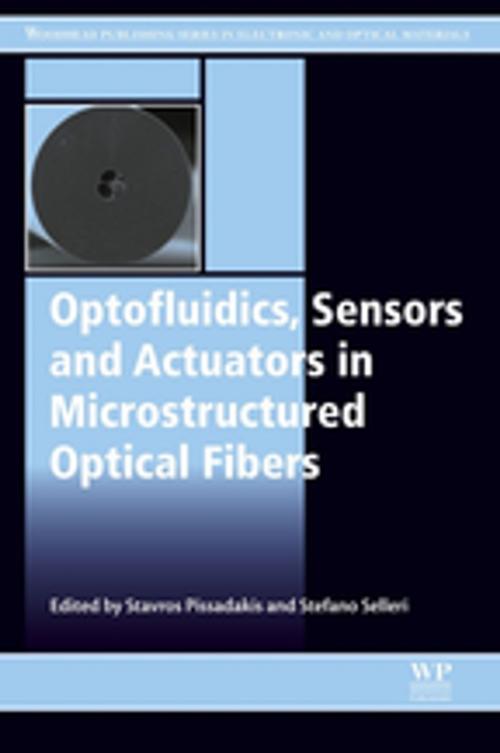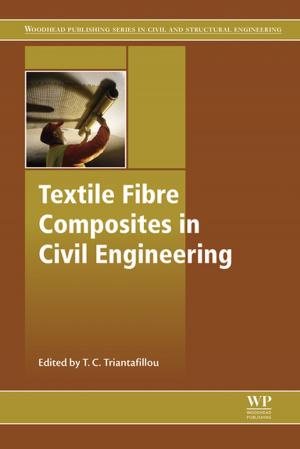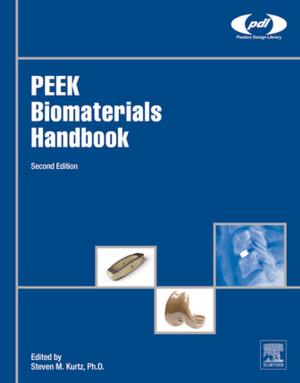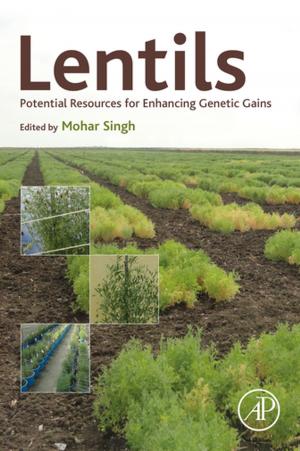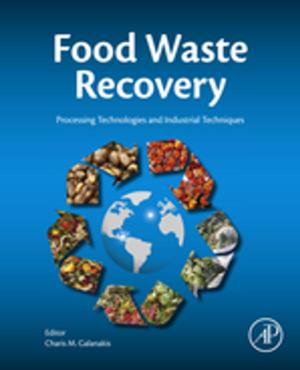Optofluidics, Sensors and Actuators in Microstructured Optical Fibers
Nonfiction, Science & Nature, Technology, Optics, Material Science| Author: | ISBN: | 9781782423478 | |
| Publisher: | Elsevier Science | Publication: | May 19, 2015 |
| Imprint: | Woodhead Publishing | Language: | English |
| Author: | |
| ISBN: | 9781782423478 |
| Publisher: | Elsevier Science |
| Publication: | May 19, 2015 |
| Imprint: | Woodhead Publishing |
| Language: | English |
Combining the positive characteristics of microfluidics and optics, microstructured optical fibres (MOFs) have revolutionized the field of optoelectronics. Tailored guiding, diffractive structures and photonic band-gap effects are used to produce fibres with highly specialised, complex structures, facilitating the development of novel kinds of optical fibre sensors and actuators.
Part One outlines the key materials and fabrication techniques used for microstructured optical fibres. Microfluidics and heat flows, MOF-based metamaterials, novel and liquid crystal infiltrated photonic crystal fibre (PCF) designs, MOFs filled with carbon nanotubes and melting of functional inorganic glasses inside PCFs are all reviewed. Part Two then goes on to investigate sensing and optofluidic applications, with the use of MOFs in structural sensing, sensing units and mechanical sensing explored in detail. PCF’s for switching applications are then discussed before the book concludes by reviewing MOFs for specific nucleic acid detection and resonant bio- and chemical sensing.
- Provides users with the necessary knowledge to successfully design and implement microstructured optical fibres for a broad range of uses
- Outlines techniques for developing both traditional and novel types of optical fibre
- Highlights the adaptability of microstructured optical fibres achieved via the use of optofluidics, sensors and actuators, by presenting a diverse selection of applications
Combining the positive characteristics of microfluidics and optics, microstructured optical fibres (MOFs) have revolutionized the field of optoelectronics. Tailored guiding, diffractive structures and photonic band-gap effects are used to produce fibres with highly specialised, complex structures, facilitating the development of novel kinds of optical fibre sensors and actuators.
Part One outlines the key materials and fabrication techniques used for microstructured optical fibres. Microfluidics and heat flows, MOF-based metamaterials, novel and liquid crystal infiltrated photonic crystal fibre (PCF) designs, MOFs filled with carbon nanotubes and melting of functional inorganic glasses inside PCFs are all reviewed. Part Two then goes on to investigate sensing and optofluidic applications, with the use of MOFs in structural sensing, sensing units and mechanical sensing explored in detail. PCF’s for switching applications are then discussed before the book concludes by reviewing MOFs for specific nucleic acid detection and resonant bio- and chemical sensing.
- Provides users with the necessary knowledge to successfully design and implement microstructured optical fibres for a broad range of uses
- Outlines techniques for developing both traditional and novel types of optical fibre
- Highlights the adaptability of microstructured optical fibres achieved via the use of optofluidics, sensors and actuators, by presenting a diverse selection of applications
